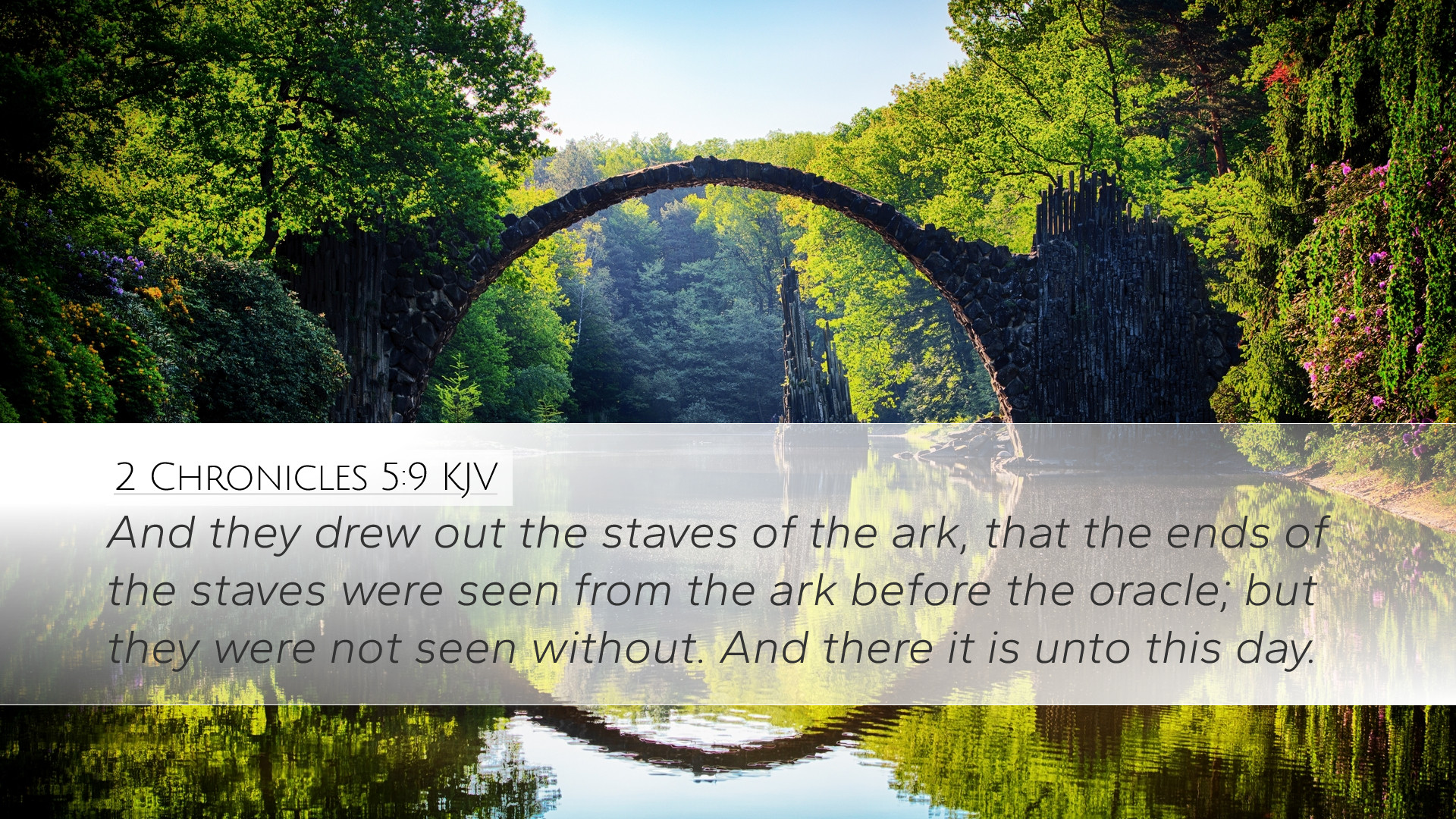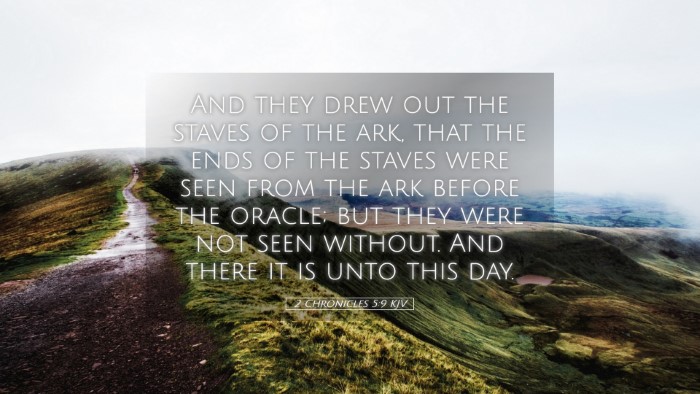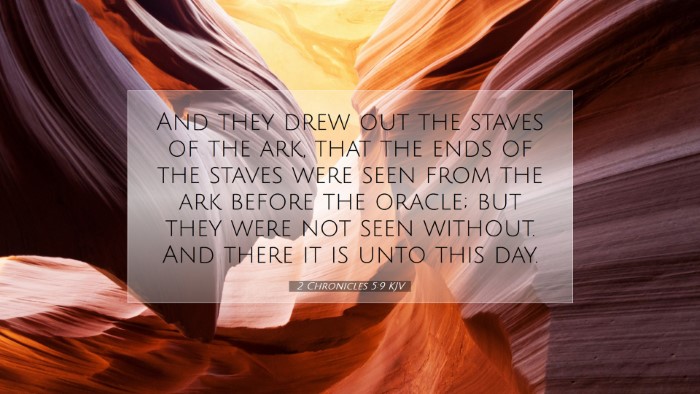Commentary on 2 Chronicles 5:9
Verse Context: 2 Chronicles 5:9 states, "And they drew out the staves of the ark, that the ends of the staves were seen from the ark before the oracle; but they were not seen without. And there it is unto this day."
Summary of Commentary
This passage marks a crucial moment in the dedication of Solomon's temple and signifies the presence of God among His people. The transportation and placement of the Ark of the Covenant carry rich theological implications and historical significance that can offer deep insights to pastors, students, theologians, and Bible scholars.
The Ark of the Covenant
The Ark of the Covenant is a symbol of God's presence and promise. According to Matthew Henry, the Ark contained significant items: the tablets of the Law, a pot of manna, and Aaron's rod that budded. Each item represented God's covenant with His people, His provision, and His leadership. The visibility of the staves signifies an invitation to consider the Law and the ongoing presence of God in the community.
Symbolism of the Staves
Albert Barnes interprets the staves as reminders of the Levites who carried the Ark. The staves being drawn out meant that God’s presence would now be firmly established in the temple, signaling the end of the mobile worship era among the Israelites. The visibility of the staves also underscores that while the Ark dwells within the temple, it still holds a connection to God’s continual guidance and support to His people.
Theological Insights
Adam Clarke emphasizes the permanence of God's presence within the temple, marking a transformation in Israel's worship dynamics. The phrase "but they were not seen without" suggests that although the Ark was secured within the temple, God's glory was confined, yet accessible, demonstrating that His holiness sets boundaries in our approach to Him. This has profound implications for understanding divine holiness and human approachability.
The Implications of Worship
Reflecting on worship, this verse highlights the transition from a movable tabernacle to a permanent structure—a significant evolution in the worship life of Israel. For theologians, this indicates a shift in how God’s people would relate to Him in worship. It raises questions about the nature of God’s presence and worship practices as they evolve through history.
Lessons for Modern Worship
- The Necessity of Sanctity: Just as the staves could be seen but the Ark remained inward, worship must ensure that the sacred remains reverent before God.
- Understanding God's Presence: The importance of recognizing God's ongoing presence and engagement in our worship, as well as the need for boundaries in regard to His holiness.
- Historical Lessons: For students and scholars, this passage provides an avenue to explore how worship has changed and how continuity is maintained through different formats and practices.
Practical Applications for Ministry
Pastors can utilize this commentary to frame their lessons around the permanence of God’s covenant and how the visible attributes of our faith (like the staves) serve to connect the congregation to divine truths. This could inspire creative approaches to ministry, encouraging accountability, reverence, and continuity in the church's mission.
Conclusion
The insights from 2 Chronicles 5:9 underscore a pivotal moment in the spiritual heritage of the Israelites. This verse serves as a profound reminder for both ancient and modern readers about God's accessibility and expectations in the worship setting. The interplay between God's holiness and His desire for relationship remains central, echoing through the ages to inform how we approach the holy and the sacred in our own worship practices.
Reflection Questions:
- How do the symbols of worship in the text inform our current practices?
- In what ways can we ensure that our worship remains reverent and rooted in the holiness of God?
- What lessons can be gleaned from the transition of worship from a temporary structure to a permanent temple?


